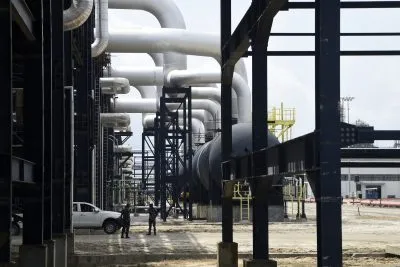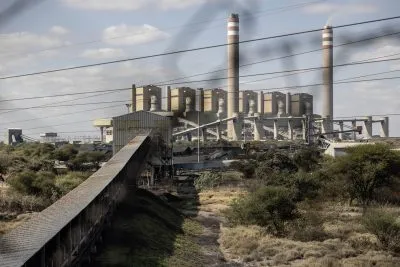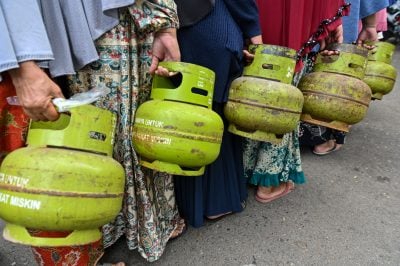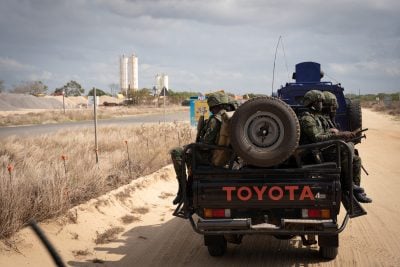After a recent period dominated by wildcat strikes, wage disputes and erratic power supply – all against a backdrop of weak commodity prices – it might seem an unfavourable time to launch a new mining company with exposure to South Africa.
But that’s the exact challenge being taken on by South32, a diversified miner newly carved out of the mining giant BHP Billiton. Following shareholder approval in May, the firm will go it alone in a bid to extract value from a collection of mostly South African and Australian assets dotted along the 32nd parallel.
Despite enthusiastic support among BHP shareholders to cast off the assets, analysts believe that South32’s potential as a standalone company could unlock a rich seam of value and inject some much-needed life into a moribund African mining market.
“To me, the excitement around South32 is the pretty unique commodity mix,” says Hanré Rossouw, portfolio manager and head of resources for emerging and frontier markets at Investec Asset Management.
“You’ve got the birth of a new mid-cap [middle-capitalisation] mining company, which actually there’s been very little of for a while. A diversified company gives you a better ability to negotiate with governments and manage risk.”
Southern Africa will be home to 29% of South32’s assets, a motley collection of coal, manganese and aluminium facilities that failed to bed in at BHP following its mega-merger with South African miner Billiton in 2001. 59% of the business will be based in Australia, with a further 12% housed in South America, according to an investor roadshow presentation.
Almost all of South32’s African assets are based in South Africa and are thus exposed to the country’s combustible mix of union activism, policy uncertainty and cost inflation.
But it is hoped that the coal business, buoyed by a strong export market, will be able to navigate the unique challenges ahead.
“I would definitely state that from an export point of view, the coal mines are top-tier assets in South Africa, and there are definitely opportunities for them to continue to be competitive in that space,” says Brent Spalding, a coal analyst at mining consultancy Wood Mackenzie.
Spalding points to the extensive export capacity at Richards Bay, the KwaZulu-Natal port conveniently located for South32’s Mpumalanga coal mines, and estimates that South32’s facilities in that region could contribute up to 20% of South Africa’s total coal exports per annum.
Power play
South32 could also profit from South Africa’s reliance on an outdated network of apartheid-era power stations. A repeated inability to bring new facilities online has left power utility Eskom hooked on inefficient coal-guzzling plants. Its long-delayed Medupi plant, originally seen as vital to the future of the grid, only increases the utility’s dependence on fossil fuels.
“These guys sell coal to Eskom, so I think they might benefit from more desperation from Eskom to secure contracts in coal. That coal business might surprise people in the end,” says Rossouw.
However, dealing with an Eskom hobbled by management woes and power supply problems could prove a double-edged sword. After all, South32’s
operations are dependent on being able to access a cost-effective and reliable power supply, particular when it comes to its aluminium smelter at Hillside.
“Hillside is quite competitive, but the situation is that they don’t have secure power at the moment,” says Wood Mackenzie aluminium analyst Edgardo Gelsomino. “You need security of power and competitive power to compete in the aluminium industry.”
According to South Africa’s Mail & Guardian newspaper, the aluminium smelters at Mozal and Hillside alone account for 5.68% of Eskom’s capacity and have benefited from favourable tariffs.
Eskom has sought to renegotiate the contracts in its favour, but the spat has prompted negative press attention for BHP Billiton and South32 at a time when Eskom is struggling to keep the lights on for ordinary citizens.
A healthy union
Alongside South Africa’s intermittent power supply problems, South32’s management is also likely to be keeping a close eye on labour relations after a spate of sector-wide strikes in recent years. These labour disputes have mostly centred on deep level mines in the gold and platinum sectors, areas in which South32 does not have a presence.
Nevertheless, in early April, BHP Billiton had to broker an agreement with the National Union of Mineworkers (NUM) to end a strike at the Hotazel manganese mines – assets which are now part of South32.
Piet Matosa, president of the NUM, tells African Business that his union’s relationship with South32 has improved after a cold spell under BHP.
“We welcome the new company but are concerned that most of the time when companies demerge, we experience job losses. But the undertaking we were given was that there would be no job losses,” he says.
Matosa says that South32’s engagement with the union has been largely positive, and that the union would continue to push for higher pay and better conditions for its workers. He remains broadly positive towards the new entity.
“According to the information shared with us, it looks like there is a bright future providing there is enough investment by the company in South Africa – we hope South32 is going to invest,” he says.
Hunter or hunted?
For Investec’s Roussouw, South32 will need to “nail its colours to the mast” and declare its future intentions if it is going to win the support of investors.
One of the most pressing questions to be answered is whether South32 will look to acquire other miners, or whether it will itself become a target for ambitious firms. Considerable speculation has centred on interest from Mick Davis, the influential South African former Billiton CFO and Xstrata CEO who now runs X2 Resources
“I think it’s a collection of assets that fits the bill for them [X2],” says Rossouw. “There are other players which could be interested. South32 could also be a buyer of assets. It’s an interesting landscape in terms of M&A optionality.”
For now, Rossouw says that South32’s geographical diversity is one of its strongest suits, and he believes that the international spread will prove useful if South African policy towards mining firms changes.
“Government will have more balanced discussions with overseas players who can say, ‘I would rather invest in my Australian assets if the environment is not conducive to my shareholders’,” he says.
David Thomas
Want to continue reading? Subscribe today.
You've read all your free articles for this month! Subscribe now to enjoy full access to our content.
Digital Monthly
£8.00 / month
Receive full unlimited access to our articles, opinions, podcasts and more.
Digital Yearly
£70.00 / year
Our best value offer - save £26 and gain access to all of our digital content for an entire year!
 Sign in with Google
Sign in with Google 


